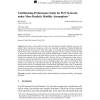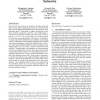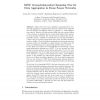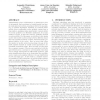118 search results - page 23 / 24 » Randomness in Wireless Networks: How to Deal with It |
TELSYS
2002
13 years 4 months ago
2002
Abstract. In the micro-cell-based PCS networks, due to the high user mobility, handoffs occur more frequently. Hence, the classical assumptions, such as the exponential assumptions...
MOBIHOC
2005
ACM
14 years 4 months ago
2005
ACM
Tiny, low-cost sensor devices are expected to be failure-prone and hence in many realistic deployment scenarios for sensor networks these nodes are deployed in higher than necessa...
DCOSS
2006
Springer
13 years 9 months ago
2006
Springer
Abstract. Today, there exist many algorithms and protocols for constructing agregation or dissemination trees for wireless sensor networks that are optimal (for different notions o...
SIGMETRICS
2009
ACM
13 years 11 months ago
2009
ACM
Disseminating a piece of information, or updates for a piece of information, has been shown to benefit greatly from simple randomized procedures, sometimes referred to as gossipi...
MSWIM
2005
ACM
13 years 10 months ago
2005
ACM
Topology Control (TC) is a well-studied technique used in wireless ad hoc networks to find energy-efficient and/or low-interference subgraphs of the maxpower communication graph....




